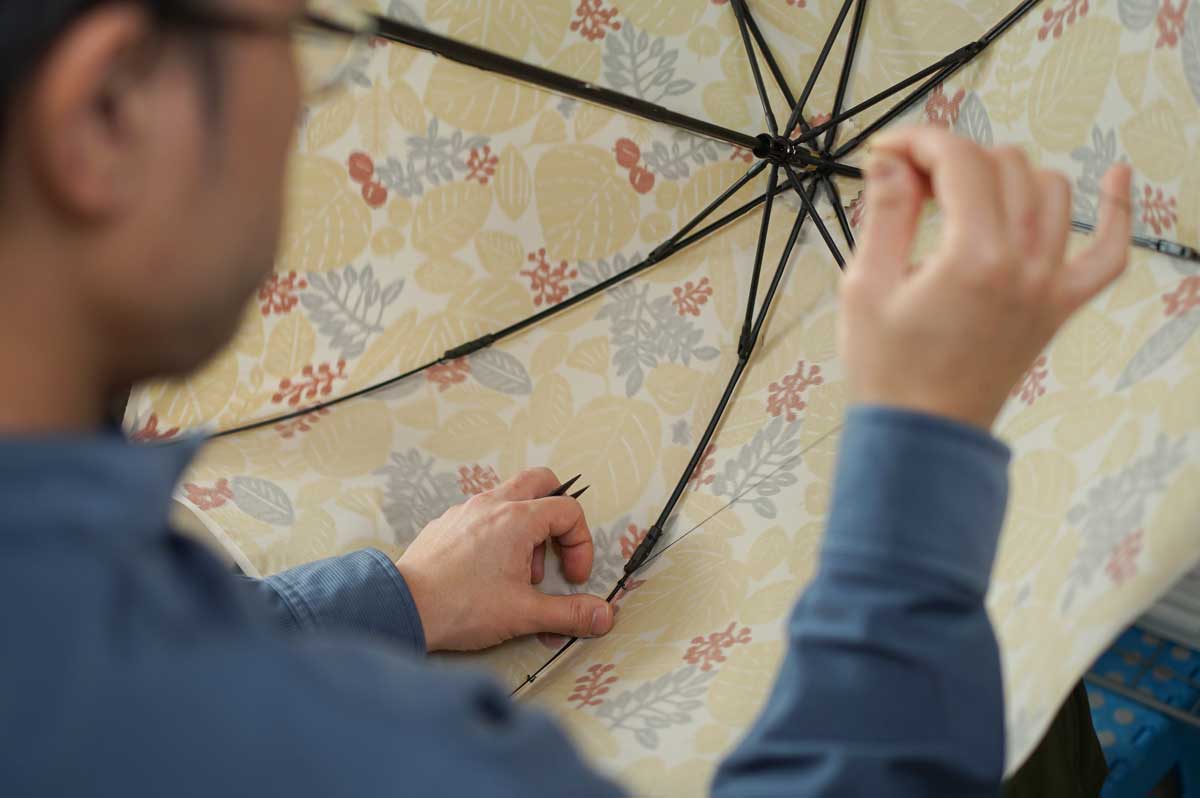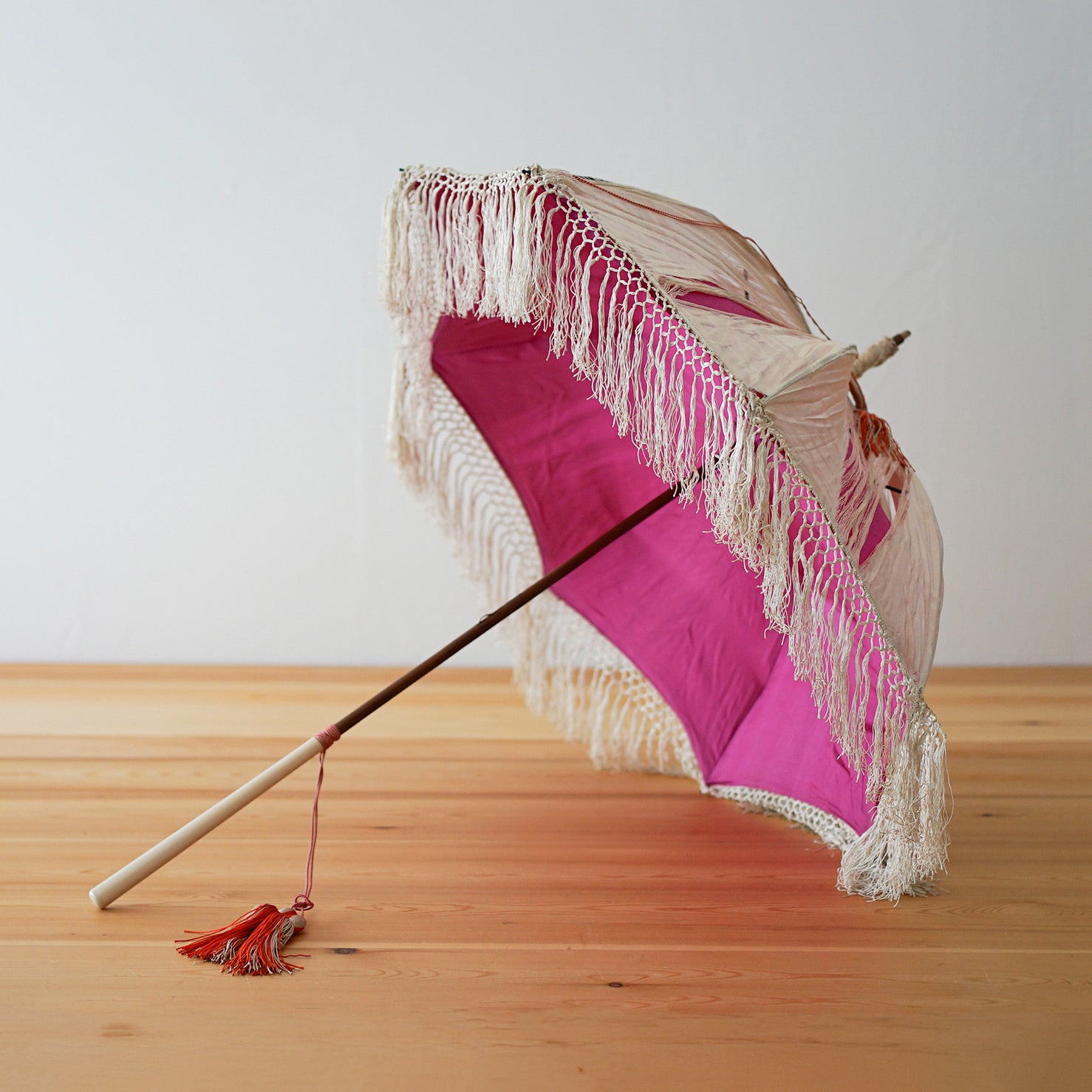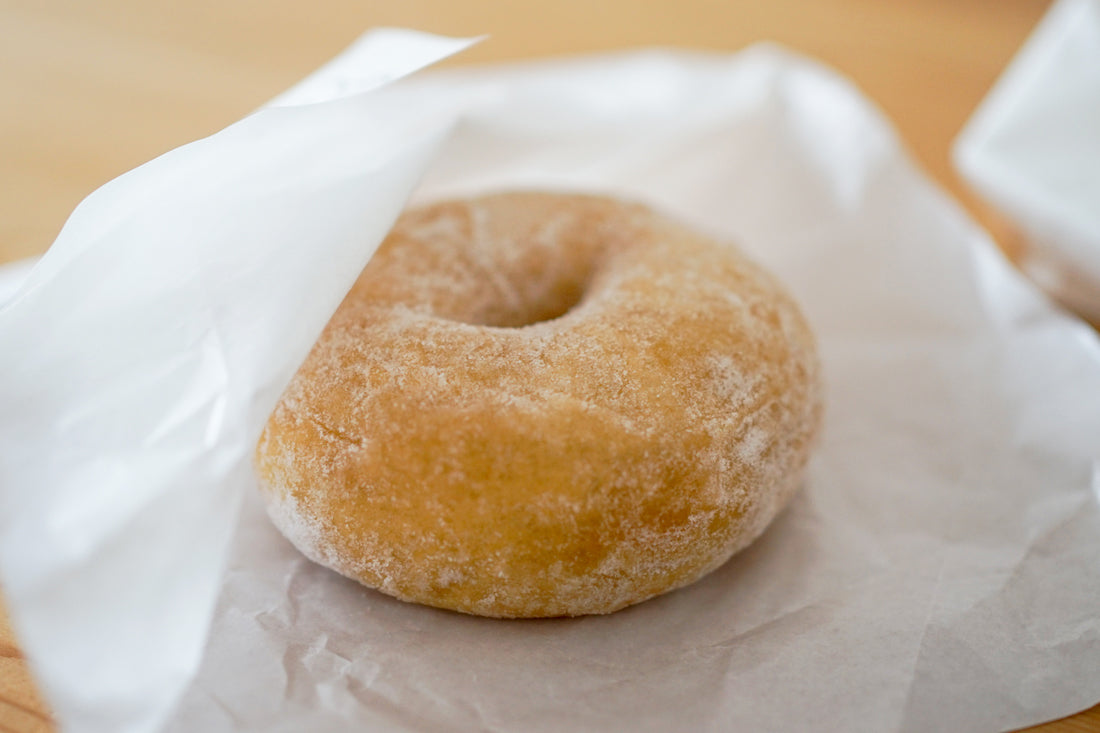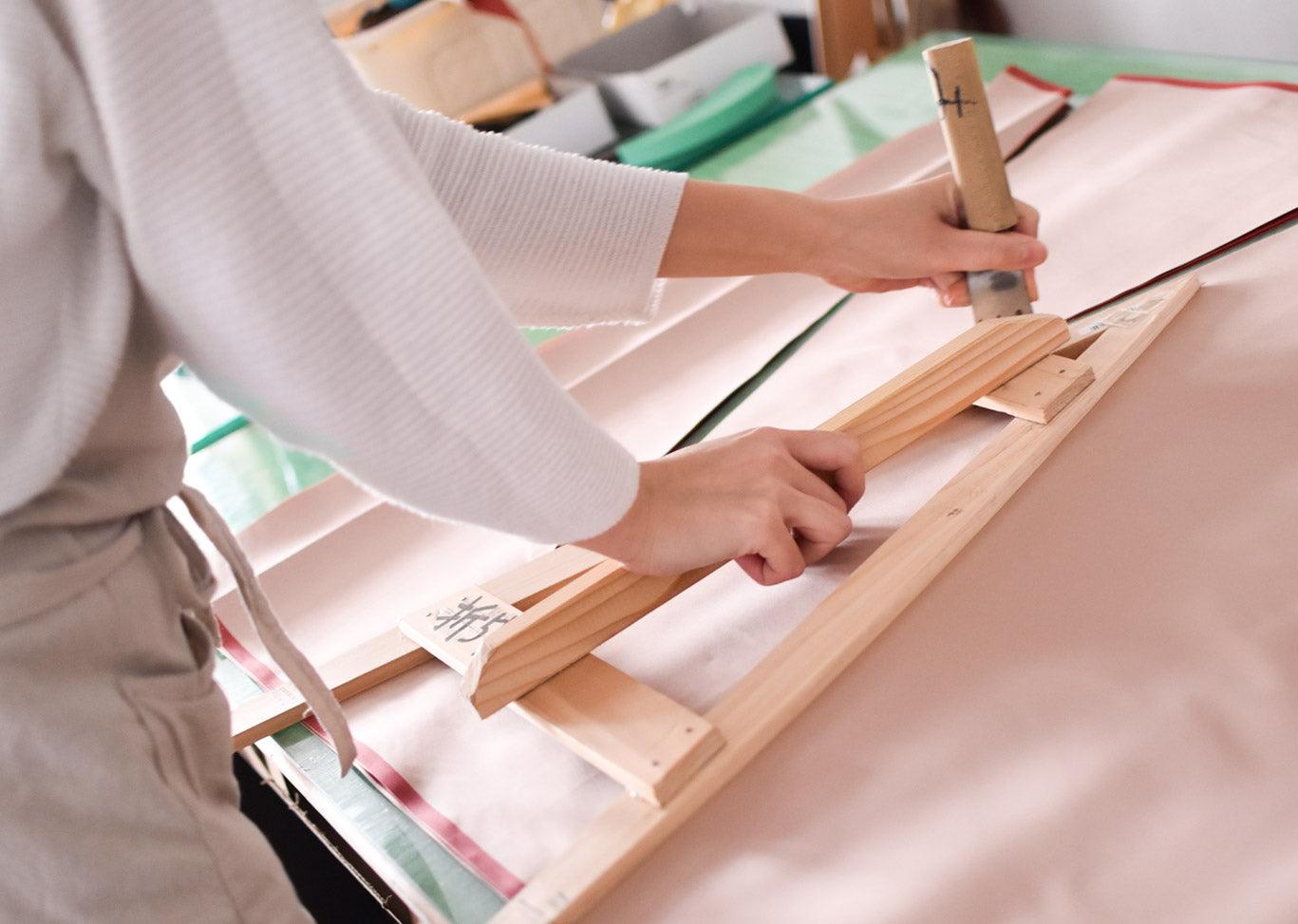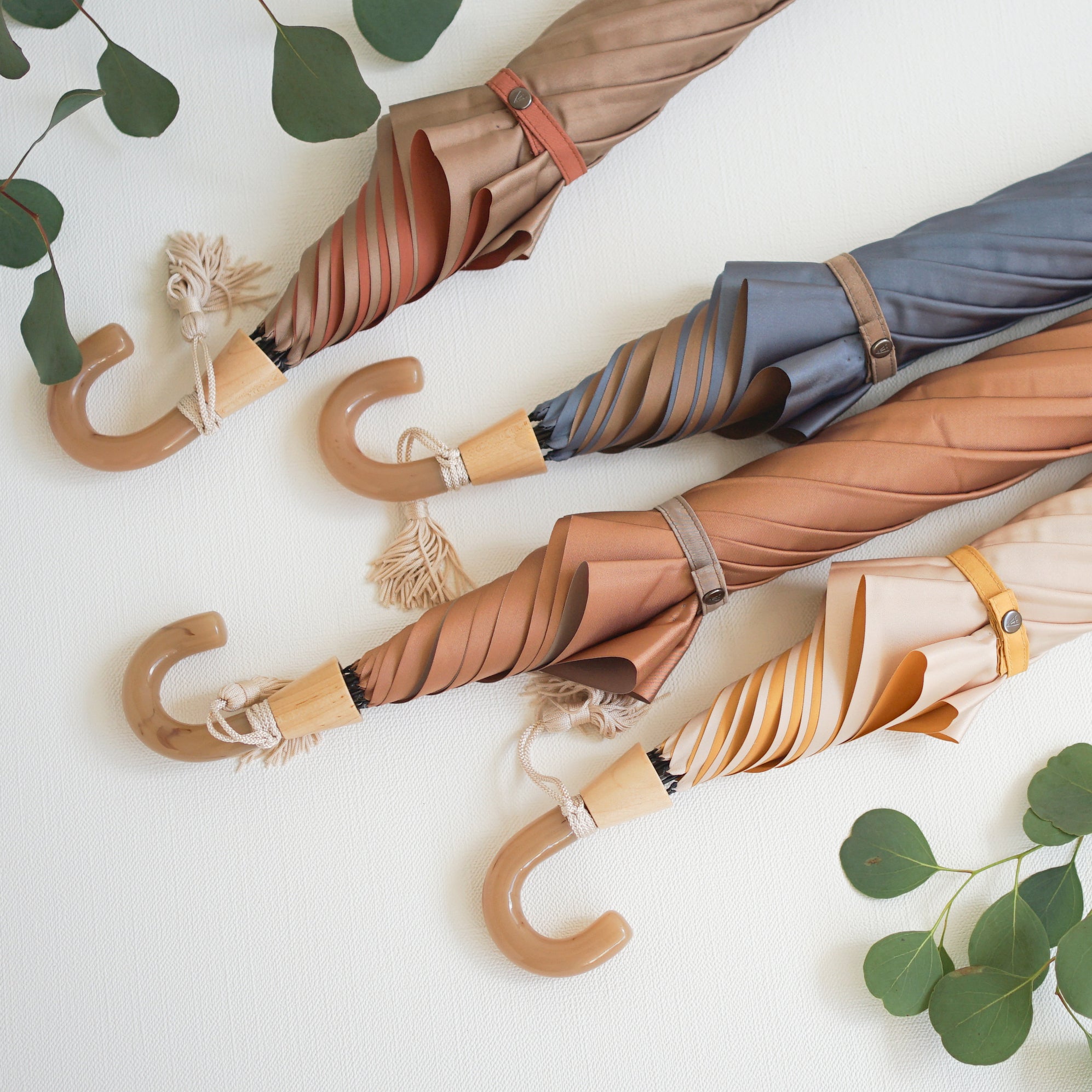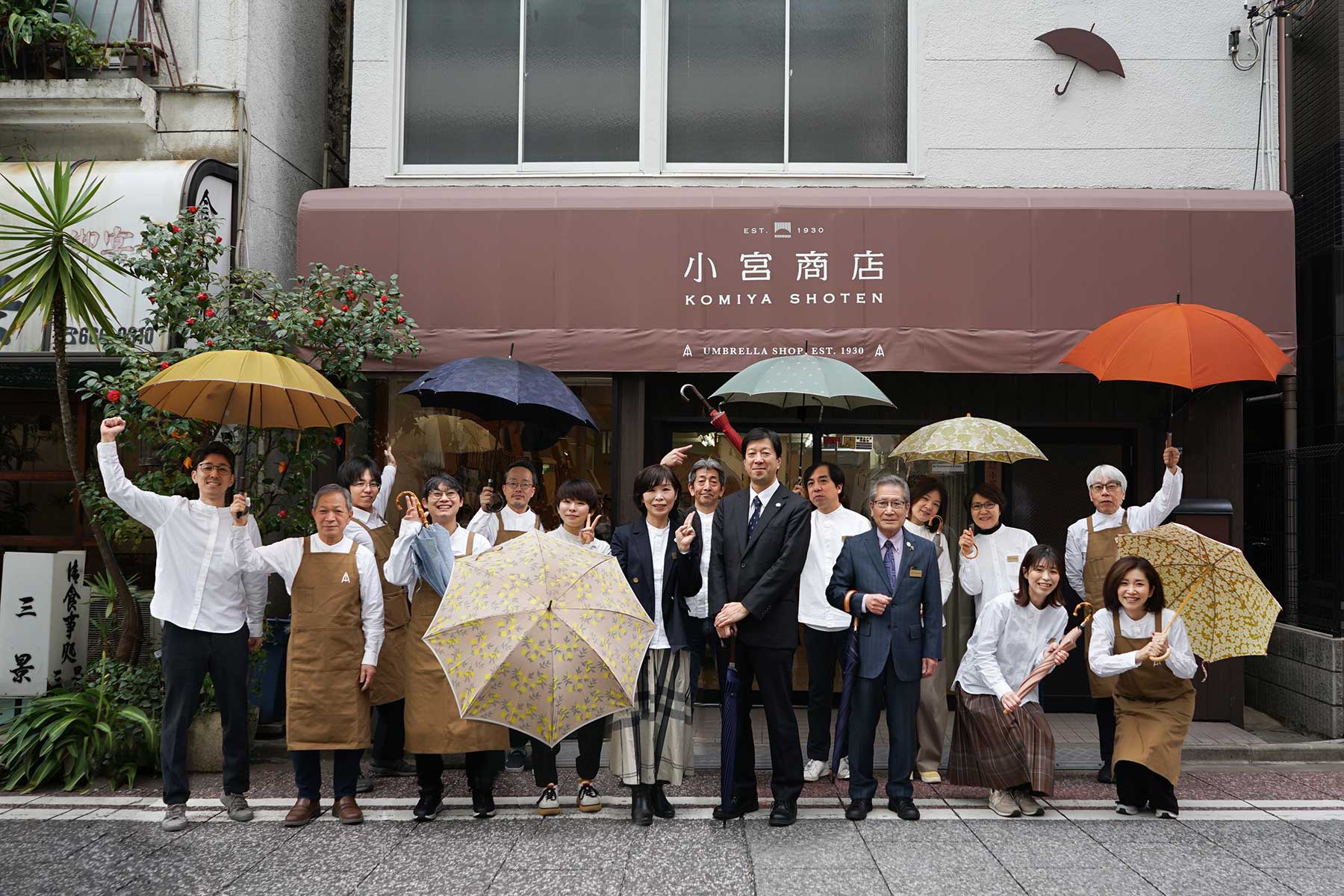
My name is Kobayashi and I am an apprentice umbrella maker.
Now, let's talk about "Kanto sewing" and "Kansai sewing."
Last time we talked about "Kanto sewing".
This time I would like to talk about "Kansai sewing".
In the 1960s, when Japan's umbrella industry was at its peak,
Nearly 90% of umbrella manufacturing in Japan was carried out by craftsmen in the Kansai region.
Even today, many umbrellas made in Japan are made using the "Kansai stitch" method.
While the "Kanto stitch" is made starting from the center of the umbrella circle,
"Kansai sewing" involves creating a shape from the outside of a circle.
When sewing the umbrella cover together using the "middle stitch" process, the needle is dropped and sewn from the base of the "piece" cut into an isosceles triangle, which means the hem always fits together neatly and snugly.
In addition, slight discrepancies in the size of the pieces that tend to occur when cutting fabric can be adjusted by adjusting the length to the end of the stitching.
This sewing method can increase production speed because it is not necessary to check the size of the "piece" each time you sew together.
Since you can sew without being aware of the difference in size of the pieces, it seems necessary to pay attention to not losing the shape.
In order to create a beautiful umbrella shape, both the "Kanto stitch" and the "Kansai stitch" are
So it seems that accurate cutting and stitching skills are both essential.
Because this is Tokyo, and because both masters Okunugi and Sugasawa make umbrellas using the "Kanto stitch" method,
Most of the umbrellas around me are "Kanto stitched" umbrellas, but occasionally, "Kansai stitched" umbrellas arrive at my master's house for repairs.
I once had the opportunity to sew up a frayed section, and it was a strange feeling to sew upside down.
Please check and see which method is used to sew the umbrellas you own.


